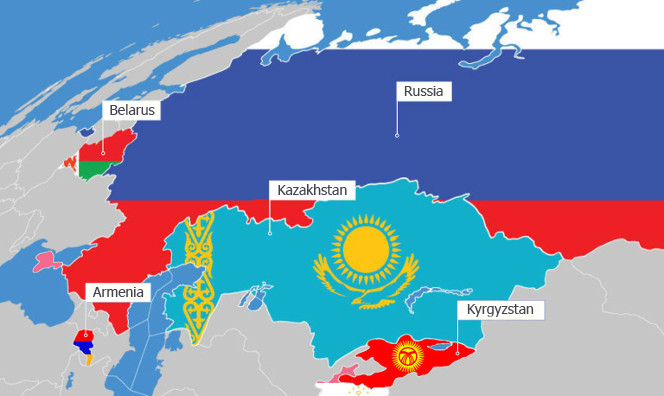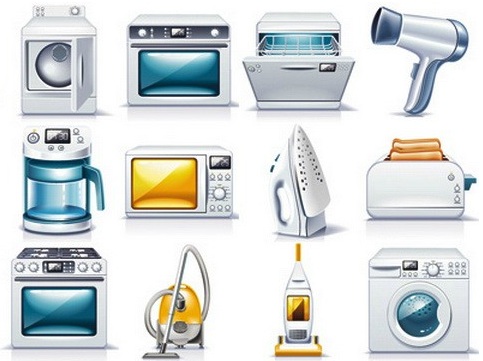The Eurasian Economic Union is a free trade area where member countries remove tariffs and quotas between themselves, but retain whatever restrictions each member chooses with non-member countries. Some provision is being made to prevent imports from outside coming into the area via the country with the lowest external tariff. In addition, members must adopt common external tariffs and quotas with non-member countries.
The Eurasian Economic Union (EAEU) harmonized tariffs entered into force on 1 January 2010, and the unified Customs Code took effect on July 1, 2010. These two documents now regulate trade in the integrated customs zone. For example, foreign goods being in transit to Russia and / or Kazakhstan through Belarus are customs cleared at the EAEU’s external frontier in Belarus. This is the same procedure for items entering Russia and Kazakhstan and destined for other countries within the Eurasian Economic Union.
By joining a customs union, a country will find that its trade patterns change. Two such changes can be distinguished: trade creation and trade diversion.
Trade creation is where consumption shifts from a high-cost producer to a lowest producer. The removal of trade barriers allows greater specialisation according to comparative advantage. Instead of consumers having to pay high prices for domestically produced goods in which the country has a comparative disadvantage, the goods can now be obtained more cheaply from other members of the Eurasian Economic Union. In return, the country can export to them goods in which it has a comparative advantage. Trade diversion is where consumption shifts from a lower-cost producer outside the Eurasian Economic Union to a higher-cost producer within the union.
In order to sell goods on the Russian market importers are required to complete a Russian customs freight declaration for every item imported. A declaration must be supported by a number of documents: contracts, commercial documents such as commercial invoices and packing lists, transport documents, import licenses (if applicable), certificates of conformity and / or safety certificates of origin (if applicable), sanitary certificate (if applicable), import permission and licenses for products containing encryption technology, and documents confirming legitimacy of declarants / brokers / importers. In addition, currency control regulations require issuance of a transaction passport for both exports and imports to ensure that hard currency earnings are repatriated to Russia.

Eurasian Economic Union : Russia, Belarus, Kazakhstan, Armenia, Kyrgyzstan
Conformity assessment
What concerns the standardization of products Russia continues to depend on product testing as a key element of the product approval process. Other types of product safety assurance, such as plant auditing, quality assessment, and post market monitoring, are still undergoing improvement. The current government authority for standardization, metrology and certification matters is the Federal Agency for Technical Regulations and Metrology or Rosstandart. The agency is housed in the Ministry of Industry and Trade. Affiliated with Rosstandart are 497 technical committees, comprised of research institutes that develop standards.
Formerly, products sold in Russia were covered under the GOST-R standards, which were developed after the collapse of the Soviet Union. The regulatory document that the company applied for was called the GOST-R certificate. It bore proof that the products conformed with the requirements of the applicable standards. In recent years, there has been a substantial movement towards the implementation of common international language on product standards and certification procedures.
Nowadays local and imported goods are subject to a new procedure of putting on the market of the Eurasian Economic Union (Russia, Belarus, Kazakhstan, Armenia and Kirghizstan). The new procedure is called the system of certification and lies in the development of 66 technical regulations of the Eurasian Economic Union (CU TR or TR TC) 34 of which has already come into force. Certificates and declarations of conformity with the requirements of these technical regulations have to be obtained. The certification contributes to the customs clearance of goods and their marketing. The requirements of the new technical regulations apply to all products entering the Russian market. The coming into force of technical regulation (CU TR or TR TC) cancels and replaces any other system of current certification in the member countries (certificate GOST R, certificate GOST K, certificate GOST B and so on).
As the result of the establishment of the CU, the system of obtaining certification documents has changed. Now there are two sets of documents dedicated to Technical Regulations and Sanitary Regulations.
Technical Regulations (Certificate of Conformity / Declaration of Conformity)
On July 1, 2010, new rules for conformity assessment, established in the CU, came into force. As a result, manufactures may now obtain unified certificates and declarations of conformity for all three (soon – five) countries. The full set of documents, including the unified list of accredited bodies and laboratories that governs this process, can be found on the Eurasian Economic Union Web site (http://www.eurasiancommission.org ). A unified list of products was also established and according to this list, those products included are required to have certificates of conformity and declarations of conformity. If a product is not included, then it should undergo the conformity process according to the national standards of Russia, Kazakhstan, or Belarus, depending on the final destination of the product.
Sanitary Regulation (Certificate of State Registration)
After July 1, 2010, the Certificate of State Registration was established for all products that need a sanitary certificate. Products which need a Certificate of State Registration are listed in part II of the “Unified list” that was approved by the CU Commission on May 28, 2010, No. 299 (last edition No. 456 dated November, 11, 2010). The procedure for obtaining Certificate of State Registration is also outlined on the CU Web site (http://www.eurasiancommission.org ).
A number of other mandatory and voluntary certification systems also exist, which are partly managed by other ministries or agencies.
Temporary entry of goods on the territory of Russia is allowed with full or partial relief from customs duties and import VAT for a period of up to two years. Russian Customs issues authorization for temporary entry of goods based on a written application submitted by an importer. The list of goods for temporary entry with full relief from customs duties and taxes as well as terms of such relief is regulated by the Eurasian Economic Union.
Full conditional relief from customs duties is allowed when it does not affect the Russian economy, such as the temporary import of:
* Containers, pallets, and other types of containers and packages for repeated use;
* Goods for the purposes of the development of international relations in the scientific, cultural, sports, cinematography and tourism fields;
* Products for international assistance;
* Commercial samples, not for sale, used at trade shows and exhibitions.
The universal 18% VAT rate (with the exception of certain foodstuffs, pharmaceuticals and medical supplies, goods for children, and printed media for which VAT is 10%) is applied to the import price, tariff, and excise tax combined. There are some exceptions from VAT. Thus, export to Russia has become more translucent.



















